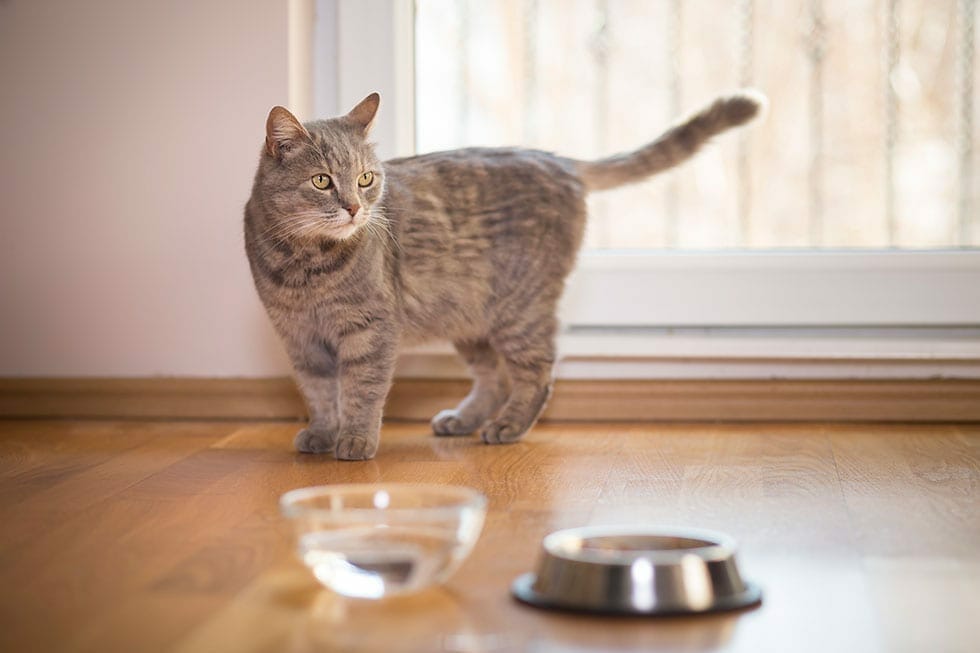
Rehoming Cats Facts
Just become the proud owner of an adopted kitty-cat? Wondering how long you’ll need to keep your new family member inside after the adoption process? Pet Insurance Australia takes a look at rehoming cats. PLUS: how to help settle a new cat into your home.
Rehoming a cat can be one of the most rewarding aspects of pet ownership. Giving a cat a much-needed forever home can be incredibly emotional for both you and your new bundle of fur. Many adoptive pet parents talk of their adoptive cat’s immense amount of love and affection, like they almost know the enormity of the bond they share with the human that ‘saved’ them.
The huge array of heartfelt stories from around the world certainly point to some impressive benefits of rehoming a cat or kitten.
How Long to Keep a Cat Indoors After Re-homing?
If you have just brought your new kitten or cat home from your chosen shelter, it’s a good idea to give them their own little safe place. A bathroom, laundry or even a bedroom works perfectly for this.
#TOPTIP – make this place the same place you intend on leaving your litter box. This way, your new furry family member will always remember where their toilet is.
In this area consider adding;
- Warm bedding
- Cubby-hole or a place to hide
- A selection of fun cat toys – think mice and balls
- Litter tray
- Food and water bowls
Once your cat/kitten is happy in this area and showing signs of being confident in their new home – normally after a few days – allow them to slowly explore the remaining home. Remember to pop other animals (like dogs) away for this initial exploration. Some cats will take longer than others to start feeling confident in their new homes, so patience is key. It’s also very important you do not rush your cat or force your rehomed kitten into situations or introductions. Go at their pace.
Your cat may walk around with their mouths open. Don’t worry this is them having a very good smell of their new home. If they are spooked, they will quickly run back into their ‘safe area’.
It is advised that you do not let your adopted cat outside for at least three to four weeks or until they are fully settled into their new home. Kittens should not be left outdoors unsupervised until at least six months of age. Many rehomed cats and kittens prefer the life of an indoor cat.
There are many benefits of keeping your rehomed cats and kittens indoors for life. If you want to allow them to explore the great outdoors there are many cat enclosures that can be built onto cat doors to allow your pets to explore the outside world in a safe manner.
Litter Tray Tips
For newly rehomed cats, it is strongly advised to go slowly with any changes to the litter tray. Make sure you have one in your safe zone or room and if hooded remove the hood for a few weeks. Once your pet is happily using the litter tray replace the hood and remove the door/flap. Again, once this is not causing any issues replace the cat-flap on the litter tray.
If you have more than one cat in your home, it’s important to have a few litter trays handy. Also don’t rush into swapping over your litter. Use the same litter for your cat that the shelter has been using, and like with food, go slowly with any change and only after your cat has settled into their new environment.
Happy Rehoming!
Get the latest Pet Insider Tips & News
We offer award-winning* pet insurance policies to protect your furry friend’s health and wellbeing. Get a quote today and give your pets the care they deserve.
Archives
Categories
- Cat Care (64)
- Cats (1)
- Dog Care (128)
- Guides (29)
- Health and Nutrition (201)
- Lifestyle and Activities (220)
- Media Release (25)
- Pet Care (249)
- Rescue Dogs (1)

